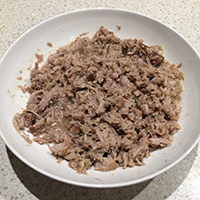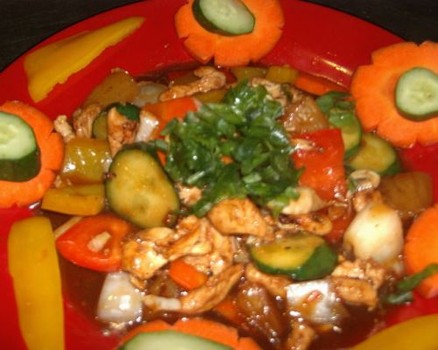Article writen by Sally Fallon and Mary G. Enig, PhD

When the fabricated food folks and apologists for the corporate farm realized that they couldn't block America's growing interest in diet and nutrition, a movement that would ultimately put an end to America's biggest and most monopolistic industries, they infiltrated the movement and put a few sinister twists on information going out to the public. Item number one in the disinformation campaign was the assertion that naturally saturated fats from animal sources are the root cause of the current heart disease and cancer plague. Butter bore the brunt of the attack, and was accused of terrible crimes. The Diet Dictocrats told us that it was better to switch to polyunsaturated margarine and most Americans did. Butter all but disappeared from our tables, shunned as a miscreant.
This would come as a surprise to many people around the globe who have valued butter for its life-sustaining properties for millennia. When Dr. Weston Price studied native diets in the 1930's he found that butter was a staple in the diets of many supremely healthy peoples.1 Isolated Swiss villagers placed a bowl of butter on their church altars, set a wick in it, and let it burn throughout the year as a sign of divinity in the butter. Arab groups also put a high value on butter, especially deep yellow-orange butter from livestock feeding on green grass in the spring and fall. American folk wisdom recognized that children raised on butter were robust and sturdy; but that children given skim milk during their growing years were pale and thin, with "pinched" faces.2
Does butter cause disease? On the contrary, butter protects us against many diseases.
Butter & Heart Disease
Heart disease was rare in America at the turn of the century. Between 1920 and 1960, the incidence of heart disease rose precipitously to become America's number one killer. During the same period butter consumption plummeted from eighteen pounds per person per year to four. It doesn't take a Ph.D. in statistics to conclude that butter is not a cause. Actually butter contains many nutrients that protect us from heart disease. First among these is vitamin A which is needed for the health of the thyroid and adrenal glands, both of which play a role in maintaining the proper functioning of the heart and cardiovascular system. Abnormalities of the heart and larger blood vessels occur in babies born to vitamin A deficient mothers. Butter is America's best and most easily absorbed source of vitamin A.
Butter contains lecithin, a substance that assists in the proper assimilation and metabolism of cholesterol and other fat constituents.
Butter also contains a number of anti-oxidants that protect against the kind of free radical damage that weakens the arteries. Vitamin A and vitamin E found in butter both play a strong anti-oxidant role. Butter is a very rich source of selenium, a vital anti-oxidant--containing more per gram than herring or wheat germ.
Butter is also a good dietary source cholesterol. What?? Cholesterol an anti-oxidant?? Yes indeed, cholesterol is a potent anti-oxidant that is flooded into the blood when we take in too many harmful free-radicals--usually from damaged and rancid fats in margarine and highly processed vegetable oils.3 A Medical Research Council survey showed that men eating butter ran half the risk of developing heart disease as those using margarine.4
Butter & Cancer
In the 1940's research indicated that increased fat intake caused cancer.5 The abandonment of butter accelerated; margarine--formerly a poor man's food-- was accepted by the well-to-do. But there was a small problem with the way this research was presented to the public. The popular press neglected to stress that fact that the "saturated" fats used in these experiments were not naturally saturated fats but partially hydrogenated or hardened fats--the kind found mostly in margarine but not in butter. Researchers stated--they may have even believed it--that there was no difference between naturally saturated fats in butter and artificially hardened fats in margarine and shortening. So butter was tarred with the black brush of the fabricated fats, and in such a way that the villains got passed off as heroes.
Actually many of the saturated fats in butter have strong anti-cancer properties. Butter is rich in short and medium chain fatty acid chains that have strong anti-tumor effects.6 Butter also contains conjugated linoleic acid which gives excellent protection against cancer.7
Vitamin A and the anti-oxidants in butter--vitamin E, selenium and cholesterol--protect against cancer as well as heart disease.
Butter & the Immune System
Vitamin A found in butter is essential to a healthy immune system; short and medium chain fatty acids also have immune system strengthening properties. But hydrogenated fats and an excess of long chain fatty acids found in polyunsaturated oils and many butter substitutes both have a deleterious effect on the immune system.8
Butter & Arthritis
The Wulzen or "anti-stiffness" factor is a nutrient unique to butter. Dutch researcher Wulzen found that it protects against calcification of the joints--degenerative arthritis--as well as hardening of the arteries, cataracts and calcification of the pineal gland.9 Unfortunately this vital substance is destroyed during pasteurization. Calves fed pasteurized milk or skim milk develop joint stiffness and do not thrive. Their symptoms are reversed when raw butterfat is added to the diet.
Butter & Osteoporosis
Vitamins A and D in butter are essential to the proper absorption of calcium and hence necessary for strong bones and teeth. The plague of osteoporosis in milk-drinking western nations may be due to the fact that most people choose skim milk over whole, thinking it is good for them. Butter also has anti-cariogenic effects, that is, it protects against tooth decay.10
Butter & the Thyroid Gland
Butter is a good source of iodine, in highly absorbable form. Butter consumption prevents goiter in mountainous areas where seafood is not available. In addition, vitamin A in butter is essential for proper functioning of the thyroid gland.11
Butter & Gastrointestinal Health
Butterfat contains glycospingolipids, a special category of fatty acids that protect against gastro-intestinal infection, especially in the very young and the elderly. For this reason, children who drink skim milk have diarrhea at rates three to five times greater than children who drink whole milk.12 Cholesterol in butterfat promotes health of the intestinal wall and protects against cancer of the colon.13 Short and medium chain fatty acids protect against pathogens and have strong anti-fungal effects.14 Butter thus has an important role to play in the treatment of candida overgrowth.
Butter & Weight Gain
The notion that butter causes weight gain is a sad misconception. The short and medium chain fatty acids in butter are not stored in the adipose tissue, but are used for quick energy. Fat tissue in humans is composed mainly of longer chain fatty acids.15 These come from olive oil and polyunsaturated oils as well as from refined carbohydrates. Because butter is rich in nutrients, it confers a feeling of satisfaction when consumed. Can it be that consumption of margarine and other butter substitutes results in cravings and bingeing because these highly fabricated products don't give the body what it needs?.
Butter for Growth & Development
Many factors in butter ensure optimal growth of children. Chief among them is vitamin A. Individuals who have been deprived of sufficient vitamin A during gestation tend to have narrow faces and skeletal structure, small palates and crowded teeth.16 Extreme vitamin A deprivation results in blindness, skeletal problems and other birth defects.17 Individuals receiving optimal vitamin A from the time of conception have broad handsome faces, strong straight teeth, and excellent bone structure. Vitamin A also plays an important role in the development of the sex characteristics. Calves fed butter substitutes sicken and die before reaching maturity.18
The X factor, discovered by Dr. Weston Price, is also essential for optimum growth. It is only present in butterfat from cows on green pasture.19 Cholesterol found in butterfat plays an important role in the development of the brain and nervous system.20 Mother's milk is high in cholesterol and contains over 50 percent of its calories as butterfat. Low fat diets have been linked to failure to thrive in children21--yet low-fat diets are often recommended for youngsters! Children need the many factors in butter and other animal fats for optimal development.
Beyond Margarine
It's no longer a secret that the margarine Americans have been spreading on their toast, and the hydrogenated fats they eat in commercial baked goods like cookies and crackers, is the chief culprit in our current plague of cancer and heart disease.22 But mainline nutrition writers continue to denigrate butter--recommending new fangled tub spreads instead.23 These may not contain hydrogenated fats but they are composed of highly processed rancid vegetable oils, soy protein isolate and a host of additives. A glitzy cookbook called Butter Busters promotes butter buds, made from maltodextrin, a carbohydrate derived from corn, along with dozens of other highly processed so-called low-fat commercial products.
Who benefits from the propaganda blitz against butter? The list is a long one and includes orthodox medicine, hospitals, the drug companies and food processors. But the chief beneficiary is the large corporate farm and the cartels that buy their products--chiefly cotton, corn and soy--America's three main crops, which are usually grown as monocultures on large farms, requiring extensive use of artificial fertilizers and pesticides. All three--soy, cotton and corn--can be used to make both margarine and the new designer spreads. In order to make these products acceptable to the up-scale consumer, food processors and agribusiness see to it that they are promoted as health foods. We are fools to believe them.
Butter & the Family Farm
A nation that consumes butterfat, on the other hand, is a nation that sustains the family farm. If Americans were willing to pay a good price for high quality butter and cream, from cows raised on natural pasturage--every owner of a small- or medium-sized farm could derive financial benefits from owning a few Jersey or Guernsey cows. In order to give them green pasture, he would naturally need to rotate crops, leaving different sections of his farm for his cows to graze and at the same time giving the earth the benefit of a period of fallow--not to mention the benefit of high quality manure. Fields tended in this way produce very high quality vegetables and grains in subsequent seasons, without the addition of nitrogen fertilizers and with minimal use of pesticides. Chickens running around his barnyard, and feeding off bugs that gather under cowpaddies, would produce eggs with superb nutritional qualities--absolutely bursting with vitamin A and highly beneficial fatty acids.
If you wish to reestablish America as a nation of prosperous farmers in the best Jeffersonian tradition, buy organic butter, cream, whole milk, whole yoghurt, and barn-free eggs. These bring good and fair profits to the yeoman producer without concentrating power in the hands of conglomerates.
Ethnic groups that do not use butter obtain the same nutrients from things like insects, organ meats, fish eggs and the fat of marine animals, food items most of us find repulsive. For Americans--who do not eat bugs or blubber--butter is not just better, it is essential.
Notes
- Price, Weston, DDS Nutrition and Physical Degeneration, 1945, Price Pottenger Nutrition Foundation, Inc., La Mesa, California
- Representative of American folk traditions about butterfat is this passage from "Neighbor Rosicky", by American author Willa Cather: [The Rosickys] had been at one accord not to hurry through life, not to be always skimping and saving. They saw their neighbours buy more land and feed more stock than they did, without discontent. Once when the creamery agent came to the Rosickys to persuade them to sell him their cream, he told them how much the Fasslers, their nearest neighbours, had made on their cream last year. "Yes," said Mary, "and look at them Fassler children! Pale, pinched little things, they look like skimmed milk. I'd rather put some colour into my children's faces than put money into the bank."
- Cranton, EM, MD and JP Frackelton, MD, Journal of Holistic Medicine, Spring/Summer 1984
- Nutrition Week Mar 22, 1991 21:12:2-3
- Enig, Mary G, PhD, Nutrition Quarterly, 1993 Vol 17, No 4
- Cohen, L A et al, J Natl Cancer Inst 1986 77:43
- Belury, MA Nutrition Reviews, April 1995 53:(4) 83-89
- Cohen, op cit
- American Journal of Physical Medicine, 1941, 133; Physiological Zoology, 1935 8:457
- Kabara, J J, The Pharmacological Effects of Lipids, J J Kabara, ed, The American Oil Chemists Society, Champaign, IL 1978 pp 1-14
- Jennings, IW Vitamins in Endocrine Metabolism, Charles C. Thomas Publisher, Springfield, Ill, pp 41-57
- Koopman, JS, et al American Journal of Public Health 1984 74(12):1371-1373
- Addis, Paul, Food and Nutrition News, March/April 1990 62:2:7-10
- Prasad, KN, Life Science, 1980, 27:1351-8; Gershon, Herman and Larry Shanks, Symposium on the Pharmacological Effect of Lipids, Jon J Kabara Ed, American Oil Chemists Society, Champaign, Illinois 1978 51-62
- Levels of linoleic acid in adipose tissues reflect the amount of linoleic acid in the diet. Valero, et al Annals of Nutritional Metabolism, Nov/Dec 1990 34:6:323-327; Felton, CV et al, Lancet 1994 344:1195-96
- Price, op cit
- Jennings, op cit
- DeCava, Judith Journal of the National Academy of Research Biochemists, September 1988 1053-1059
- Price, op cit
- Alfin-Slater, R B and L Aftergood, "Lipids", Modern Nutrition in Health and Disease, Chapter 5, 6th ed, R S Goodhart and M E Shils, eds, Lea and Febiger, Philadelphia 1980, p 131
- Smith, MM, MNS RD and F Lifshitz, MD Pediatrics, Mar 1994 93:3:438-443
- Enig, op cit
- "Diet Roulette", The New York Times, May 20, 1994.
About the Authors
Sally Fallon is the author of Nourishing Traditions: The Cookbook that Challenges Politically Correct Nutrition and the Diet Dictocrats (with Mary G. Enig, PhD), a well-researched, thought-provoking guide to traditional foods with a startling message: Animal fats and cholesterol are not villains but vital factors in the diet, necessary for normal growth, proper function of the brain and nervous system, protection from disease and optimum energy levels. She joined forces with Enig again to write Eat Fat, Lose Fat, and has authored numerous articles on the subject of diet and health. The President of the Weston A. Price Foundation and founder of A Campaign for Real Milk, Sally is also a journalist, chef, nutrition researcher, homemaker, and community activist. Her four healthy children were raised on whole foods including butter, cream, eggs and meat.
Mary G. Enig, PhD is an expert of international renown in the field of lipid biochemistry. She has headed a number of studies on the content and effects of trans fatty acids in America and Israel, and has successfully challenged government assertions that dietary animal fat causes cancer and heart disease. Recent scientific and media attention on the possible adverse health effects of trans fatty acids has brought increased attention to her work. She is a licensed nutritionist, certified by the Certification Board for Nutrition Specialists, a qualified expert witness, nutrition consultant to individuals, industry and state and federal governments, contributing editor to a number of scientific publications, Fellow of the American College of Nutrition and President of the Maryland Nutritionists Association. She is the author of over 60 technical papers and presentations, as well as a popular lecturer. Dr. Enig is currently working on the exploratory development of an adjunct therapy for AIDS using complete medium chain saturated fatty acids from whole foods. She is Vice-President of the Weston A Price Foundation and Scientific Editor of Wise Traditions as well as the author of Know Your Fats: The Complete Primer for Understanding the Nutrition of Fats, Oils, and Cholesterol, Bethesda Press, May 2000. She is the mother of three healthy children brought up on whole foods including butter, cream, eggs and meat. See her website at http://www.enig.com/trans.html.









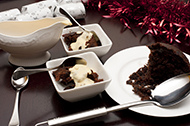 We shared some great Christmas pudding recipes last month that include suet that will leave your Christmas puddings moist and delicious in a way that butter and other options just can’t. November is the perfect
time to get started with your puddings as the mixture is even more amazing if left to mature. You can find out more
We shared some great Christmas pudding recipes last month that include suet that will leave your Christmas puddings moist and delicious in a way that butter and other options just can’t. November is the perfect
time to get started with your puddings as the mixture is even more amazing if left to mature. You can find out more 
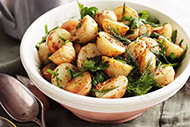 Roast potato salad - everyone
loves a potato salad. There’s rarely a picnic or BBQ where this salad doesn’t make an appearance so why not make it extra special this Christmas by
roasting your potatoes before dressing them. By roasting them in lard you not only get that lovely golden colour and scrumptious flavour, you also
get that an added crunch if you leave dressing until the last minute.
Roast potato salad - everyone
loves a potato salad. There’s rarely a picnic or BBQ where this salad doesn’t make an appearance so why not make it extra special this Christmas by
roasting your potatoes before dressing them. By roasting them in lard you not only get that lovely golden colour and scrumptious flavour, you also
get that an added crunch if you leave dressing until the last minute. 
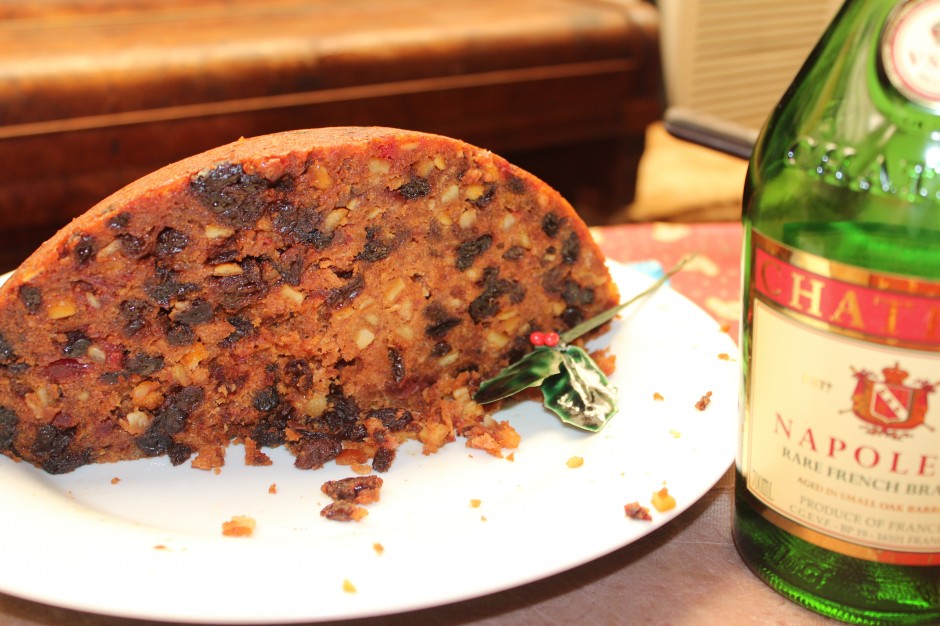
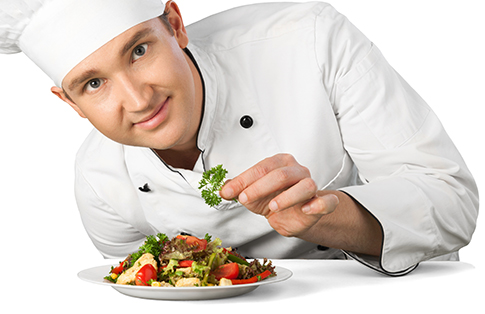
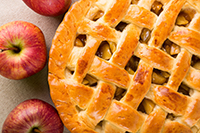 Once you have decided on using fresh ingredients, the
next step for a Chef is to develop a dish that has complementary flavours. Are you curious why some ingredients seem to have a natural affinity for
one another while others just don't work well together?
Once you have decided on using fresh ingredients, the
next step for a Chef is to develop a dish that has complementary flavours. Are you curious why some ingredients seem to have a natural affinity for
one another while others just don't work well together?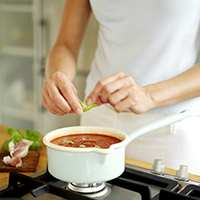 Whether it’s the perfect bolognaise sauce, hollandaise
sauce or tomato sauce- if you are a frequent watcher of reality cooking TV shows you will know that the winners are always those that can perfect a
sauce that raises the bar on any dish.
Whether it’s the perfect bolognaise sauce, hollandaise
sauce or tomato sauce- if you are a frequent watcher of reality cooking TV shows you will know that the winners are always those that can perfect a
sauce that raises the bar on any dish. 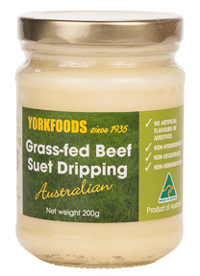 Quality
animal fats are the healthy alternative to heavily processed cooking oils. If you really want to impress your friends and family, why not try our lard
which we’re thrilled to see finally back in vogue with many chefs world-wide. Lard and dripping are slowly returning to being a secret weapon in the
kitchen as they pack not just a flavor punch but also the incredible aromas that are so loved by many for transforming a plain dish into a gourmet
meal!
Quality
animal fats are the healthy alternative to heavily processed cooking oils. If you really want to impress your friends and family, why not try our lard
which we’re thrilled to see finally back in vogue with many chefs world-wide. Lard and dripping are slowly returning to being a secret weapon in the
kitchen as they pack not just a flavor punch but also the incredible aromas that are so loved by many for transforming a plain dish into a gourmet
meal! .jpg?Action=thumbnail&algorithm=fill_proportional&width=269)
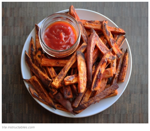
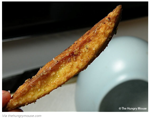

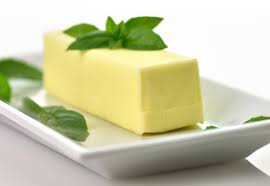 The team here at York Foods are a lot of things. We’re a family and a business. We’re locals through and through. We’re pioneers, advocates, and self promoters. We are passionate and we’re determined. We’re all of these things and more because we stand behind our range of 100% natural and Australian-made products and we firmly believe that they should be a part of your family’s diet.
The team here at York Foods are a lot of things. We’re a family and a business. We’re locals through and through. We’re pioneers, advocates, and self promoters. We are passionate and we’re determined. We’re all of these things and more because we stand behind our range of 100% natural and Australian-made products and we firmly believe that they should be a part of your family’s diet.
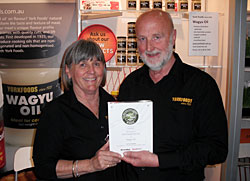 Goulburn business, York Foods has won the award for Best New Retail Product at the Fine Food Australia show in Sydney this week for its Wagyu oil product. Winning this prestigious award will help promote York Foods to a wider audience in the food industry.
Goulburn business, York Foods has won the award for Best New Retail Product at the Fine Food Australia show in Sydney this week for its Wagyu oil product. Winning this prestigious award will help promote York Foods to a wider audience in the food industry.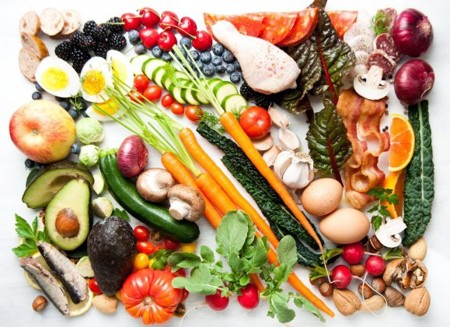
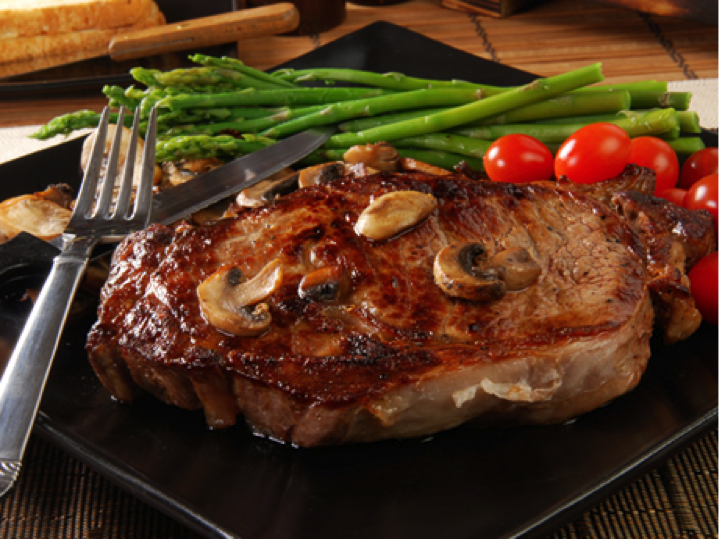
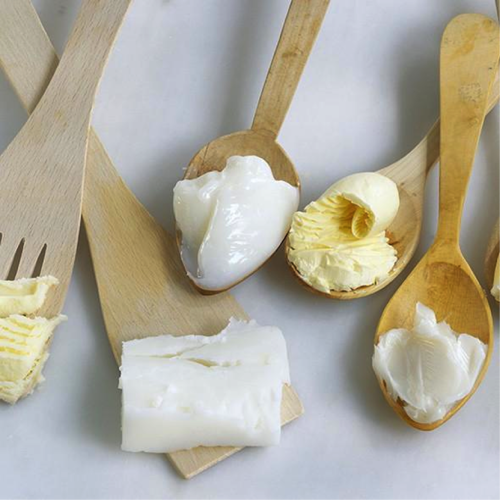
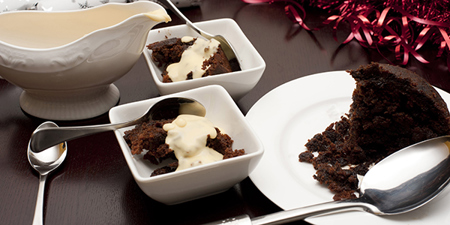
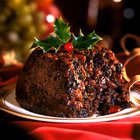
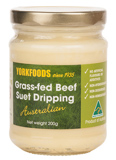
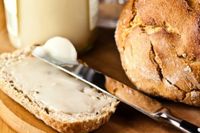
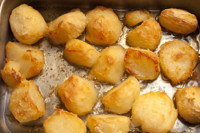
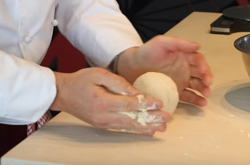
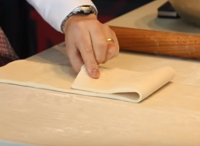

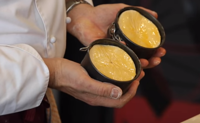

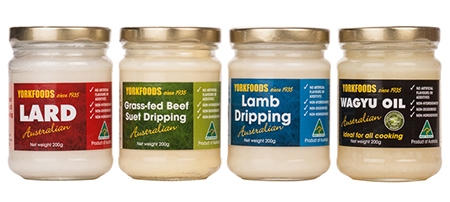
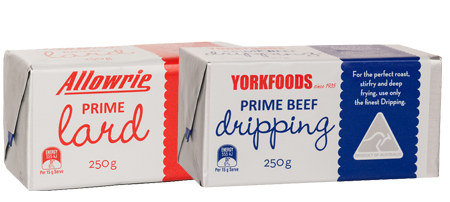
 A rendered Wagyu cooking oil product which can be used as a beef-based substitute for expensive duck fat in cooking has scored a major award at the nation’s largest food industry exhibition.
A rendered Wagyu cooking oil product which can be used as a beef-based substitute for expensive duck fat in cooking has scored a major award at the nation’s largest food industry exhibition.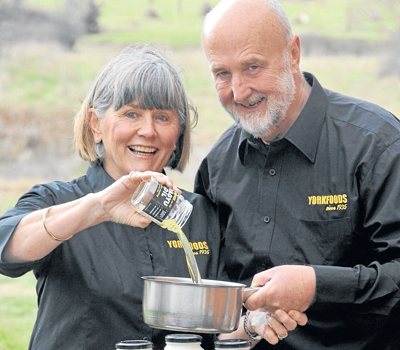 IT TURNS out there was a reason our parents and grandparents cooked with fat – it tastes better.
IT TURNS out there was a reason our parents and grandparents cooked with fat – it tastes better. 
